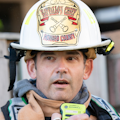First Due: Competency-Based Training that Targets Error Prevention
On July 23, 2018, Lt. Nathan “Nate” Flynn of the Howard County, MD, Department of Fire and Rescue Services (HCDFRS) perished while he fought a house fire in Clarksville, MD. Afterward, HCDFRS commissioned an Internal Safety Review Board to investigate the factors that contributed to Flynn’s death as well as to look beyond the immediate causes to discover all of the factors that affected the event.
The report that resulted from the investigation, which was released on June 28, 2019, lists five critical factors for departmental leadership to address. Among them is “creating a competency-based training program, in which all personnel complete hands-on training in realistic conditions, with an emphasis on practical error prevention and error trapping.”
THOAR
In response to this recommendation, HCDFRS began to run its companies through Tactical High-Risk Operations Academy Rotations (THOAR) in January of 2020. The rotations were designed to increase task cohesion, situational awareness and recognition-primed decision-making. Over the course of 18 months, HCDFRS’s Bureau of Education and Training conducted multicompany evolutions in acquired structures with on-duty units. Companies that normally would work together during the initial stages of a structure fire trained together with their assigned battalion chiefs.
The THOAR concept stemmed from Capt./Paramedic Brandon Thibeault, who envisioned practical scenarios at the company and battalion levels, utilizing donated properties throughout Howard County that were slated for destruction.
After several rounds of THOAR training, members from surrounding jurisdictions, including Anne Arundel County, Montgomery County and Prince George’s County, were invited to participate in combined evolutions, hosted by HCDFRS. The drills used acquired structures in Howard County to simulate fire conditions that likely would be present when companies arrive at a structure fire. For the mutual-aid evolutions, the scenario involved a basement fire in a two-story, single-family residence. The fire extended to the first floor of the structure, and it wasn’t immediately evident that there was basement involvement. Companies were staggered, so they arrived several minutes apart to simulate realistic conditions and capabilities of first-arriving units.
The scenarios were designed so that the first-alarm assignment was composed of multiple jurisdictions—for example, an engine company from Howard County, an engine company from Anne Arundel County, a ladder truck from Prince George’s County and a battalion chief from Montgomery County. The units were assigned so that companies that hail from different jurisdictions that have mismatched SCBA models would work together inside of the structure.
Groundwork
The companies and battalion chiefs from these jurisdictions meet regularly to discuss policy, tactics and strategy. When the mutual-aid THOAR scenarios began, it was apparent that prior meetings and discussions paid dividends. Except for some verbiage differences between different levels of alarms (working fire dispatch versus rapid intervention team dispatch versus task force), the companies and chief officers who were involved in the trainings worked together as though they were all part of a singular fire department. This is a testament to the effectiveness of the training foundations that were laid prior to the combined evolutions.
In the central Maryland region, it isn’t unusual to run a structure fire with the aforementioned departments. The importance of constant, realistic training with surrounding mutual-aid partners can’t be stressed enough. The structure that’s on fire will care little for which county seal is on the side of the fire apparatus that arrives.
We owe it to ourselves and to the public to ensure that, regardless of who arrives first, the units that are on scene act as a singular cohesive fire department to mitigate the emergency for which they were called.
The success of THOAR is a testament to the administration’s belief in the project as well as to the tireless work of the men and women to improve the department.
About the Author

David Reines
David Reines is a battalion chief and paramedic in the Howard County, MD, Department of Fire and Rescue Services. He has served the department for 19 years, holds a bachelor's degree in fire science, has a Master's in Business Administration, with a specialization in homeland security, and is a Maryland State Fire-Rescue Services Instructor.
